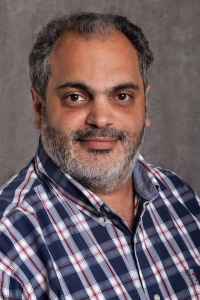George J. Musa, PhD
- Associate Professor of Clinical Epidemiology (in Psychiatry)

Overview
Academic Appointments
- Associate Professor of Clinical Epidemiology (in Psychiatry)
Credentials & Experience
Education & Training
- BA, 2003 Hunter College, City University of New York (CUNY)
- MA, 2006 Hunter College, City University of New York (CUNY)
- M Phil, 2010 Graduate Center, City University of New York (CUNY)
- PhD, 2013 Graduate Center, City University of New York (CUNY)
Committees, Societies, Councils
Research
Research Interests
- Biostatistical Methods
- Child and Adolescent Health
- child and adolescent psychiatry and epidemiology
- Chronic disease
- Environmental Health
- Global Health
- Incarceration Prevention
- Mental Health
- Public Health Education
- Substance Use
- Urban Health
Global Health Activities
Prevalence and Dynamics of Suicide in LMICs, Tajikistan: Suicide is a world-wide phenomenon and the World Health Organization (WHO) has recently declared that depression (highly associated with suicide) is the number one disease burden in the world. Close to one million people commit suicide each year, with ten to twenty times as many attempts. By the year 2020, it is estimated that 1.53 million suicides will occur annually worldwide. That is equivalent to one death every twenty seconds, or one attempt every 1-2 seconds. Historically, suicide among Young People was less frequent than among the elderly. More recently, in most countries, a shift has taken place whereby the rate of suicide among the younger population has surpassed the rate among the elderly. Globally, the highest rate of all suicides occurs among those under 25 years of age. Based on a perception that the rate of suicide in Young People was increasing, especially among girls, the Sughd Governor asked for assistance from UNICEF. Consequently, UNICEF-Tajikistan commissioned a Study: Prevalence and Dynamics of Suicide among Children and Young People, designed and conducted by GPEG.
Mental health literacy and psycho-education, Armenia, Brazil, China (PeopleÔøΩs Republic of), Egypt, France, Georgia, Germany, Hungary, Ireland, Israel, Italy, Russia, Spain, Sweden, Uganda: At GPEG, we believe that mental health begins with awareness; and, to increase awareness, we need to begin with children. Since 2004, we have conducted several large-scale studies looking at the efficacy of mental health awareness/literacy programs across the world. As lead researchers in one of three components of the World Psychiatric AssociationÔøΩs (WPA) task force on Child Mental Health, in collaboration with the World Health Organization (WHO) and the International Association of Child Psychiatrists and Allied Professions (IACPAP), CPEG conducted a nine-country (5 continent) study designed to measure pre- and post-campaign awareness among students, parents and teachers. This awareness approach was later re-conceptualized and applied to the European Union funded Randomized Controlled Trial (RCT): Saving and Empowering Young Lives in Europe (SEYLE). With Dr. Danuta Wasserman, Karolinska Institute, as Principal Investigator, a more interactive psycho-education awareness program was carried out across 10 countries and over 11,000 students, with GPEG providing methodological consultation. The overall aim of the SEYLE RCT that included three interventions and controls was to identify an effective intervention for suicidal behavior. The awareness arm of this RCT had the highest reduction of suicidal behavior and depression, compared to the other arms. This is the first study to identify a psychosocial-education intervention as the most effective intervention against suicidal behavior, compared to case identification by professionals or school staff.
Spatial distribution of health outcomes in Taiwan, Taiwan: With my collaborators in the National Health Research Institutes (NHRI) in Taiwan (NIH counterpart), I have investigated the spatial distribution of heavy metal contaminants in soils of Changhwa County, a major agricultural county in Taiwan, co-authored the first ever five-volume atlas of Cancer in Taiwan and have collaborated on using GIScience methods in modeling access to health care in a remote area of Taiwan.